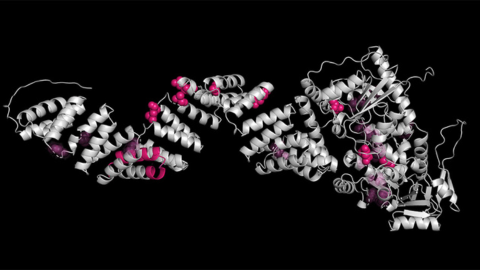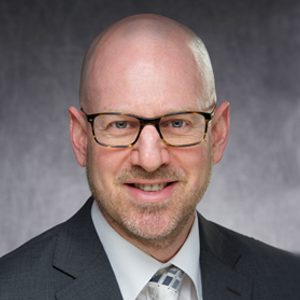Demystifying the chalk talk
Congratulations! You’ve succeeded as a graduate student, changed institutions and obtained first-author publications. You’ve obtained funding for your postdoctoral fellowship or even for your transition to independence. You’ve identified some schools that are looking for faculty members in your area and have developed a brief, compelling research plan. Your referees are enthusiastic and prompt. You were personable and prepared during a phone call or Skype with the search committee chair, and you’ve been invited to a two-day campus interview. There, you will have meetings with members of the search committee and other members of the faculty, have lunch with graduate students and postdocs, take tours of shared resources and give two presentations.
On the first day, you’ll give your 60-minute public seminar, being sure to finish in 45 to 50 minutes to allow for questions. On the second day, you’ll be in the conference room for a 60-minute chalk talk.
Because chalk talks are not generally open to postdoctoral fellows, you’ve never seen one, but you’ve heard that great candidates do not always give good chalk talks.
What’s a chalk talk?
A chalk talk is your opportunity to present your forward-looking research program to potential colleagues. They will have seen your seminar on the first day, so your research accomplishments will be fresh on their minds.
They will be wondering how you plan to organize your laboratory, what types of experiments you plan to do first, what your funding plans are, what your relationship is with your current principal investigator, who you think your major competition is and how well you have thought out your research plans in case things don’t work out the way you think they will.
Do you have to use chalk?
Generally, no, though you should ask.
Channel your inner PI
Never interview as though you are a postdoc with only your two hands. Project your inner principal investigator, who is capable of defending a progressive research plan to successful colleagues and who appears capable of directing a small research group.
Though your plans probably require another two to three people to get off the ground, if you describe plans for your first eight trainees, you are likely to come off as far too ambitious (and expensive) to hire.
Organizing your presentation
Spend the first few minutes on a summary slide or two to remind the audience of your major findings. Don’t assume a good memory or great insights into your experimental system.
The next slide is an outline of a couple of fundable directions in which you plan to take your work. You may have three or more project ideas, but you won’t have time to show more than one or two, and you should not show your third best idea during this hour. Your transition to independence will require intense focus and many tactical decisions. You do not want to look scattered. Determine your best project(s) in advance and practice your chalk talk with faculty members of diverse backgrounds.
As soon as you have sketched out the one or two projects you plan to launch, you might state that you’d like to spend the next 30 to 35 minutes on project 1 and the remaining time on
project 2.
The best next slide is a bulleted list of the specific aims in your first project. Here, candidates with funding that will extend into their next positions have a huge advantage. These candidates can list the aims of their R00 or R01 or American Heart Association grant. Such aims are always easier to defend, because the candidates have defended them already to a review panel and because faculty members will feel that one of two major risks has been taken off their hands. The first risk is that a new hire might fail to obtain external funding for the research program. The second risk is that, even if startup and other funding is in place, the project may not work or may work and have limited scientific impact.
Faculty will interject freely during your presentation, in part to get their key questions answered and in part to see how you interact and think on your feet. Your ability to interact as a peer is paramount. If you have an advocate on the faculty, this person will help you get to your second project, especially if the discussion bogs down somewhere.
In general, you should describe experimental plans with as few slides as possible. You may get some bonus points if you can use the white board effectively in response to a question. You get major bonus points for composure, clarity and cutting-edge approaches to problems that will move your field forward.
If you are reading this column as a trainee who has yet to be invited to give a chalk talk, the best practice is to write a grant proposal to fund your research ideas. You can be assured that reviewers will identify the problems!
Enjoy reading ASBMB Today?
Become a member to receive the print edition four times a year and the digital edition monthly.
Learn moreFeatured jobs
from the ASBMB career center
Get the latest from ASBMB Today
Enter your email address, and we’ll send you a weekly email with recent articles, interviews and more.
Latest in Careers
Careers highlights or most popular articles

Upcoming opportunities
Friendly reminder: May 12 is the early registration and oral abstract deadline for ASBMB's meeting on O-GlcNAcylation in health and disease.

Sketching, scribbling and scicomm
Graduate student Ari Paiz describes how her love of science and art blend to make her an effective science communicator.

Embrace your neurodivergence and flourish in college
This guide offers practical advice on setting yourself up for success — learn how to leverage campus resources, work with professors and embrace your strengths.

Upcoming opportunities
Apply for the ASBMB Interactive Mentoring Activities for Grantsmanship Enhancement grant writing workshop by April 15.

Quieting the static: Building inclusive STEM classrooms
Christin Monroe, an assistant professor of chemistry at Landmark College, offers practical tips to help educators make their classrooms more accessible to neurodivergent scientists.

Unraveling oncogenesis: What makes cancer tick?
Learn about the ASBMB 2025 symposium on oncogenic hubs: chromatin regulatory and transcriptional complexes in cancer.

